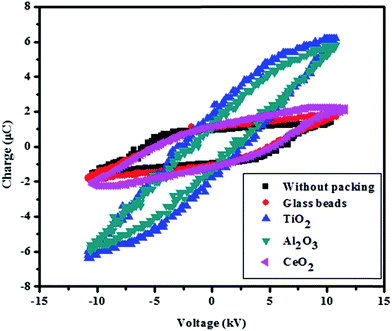 Open Access Article
Open Access ArticleCreative Commons Attribution 3.0 Unported Licence
Correction: CO2 decomposition in a packed DBD plasma reactor: influence of packing materials
Debjyoti Ray and
Ch. Subrahmanyam*
Department of Chemistry, Indian Institute of Technology Hyderabad, Ordnance Factory Estate, Yeddumailaram, 502205, Telangana, India. E-mail: csubbu@iith.ac.in; Fax: +91 40 2301 6032; Tel: +91 40 2301 6050
First published on 3rd October 2016
Abstract
Correction for ‘CO2 decomposition in a packed DBD plasma reactor: influence of packing materials’ by Debjyoti Ray et al., RSC Adv., 2016, 6, 39492–39499.
The authors would like to make the following changes to their manuscript to correct errors in their original manuscript which were due to electrical interference which was present in the earlier experiments. An explanation of the interference and its effects is given in the following paragraph.
In general, under the conditions of the present study (low frequency and high voltage) V–Q Lissajous figures are expected to take the shape of a near parallelogram/ellipsoidal. In order to understand the unusual shape of V–Q figures in the original manuscript, the authors conducted various experiments and noticed that there was some electrical interference and capacitor malfunctioning. The new set of experiments showed a clear parallelogram throughout the conditions of the present study and the corresponding power calculation indicated a maximum deviation of 10% to the reported data; the changes do not affect the overall conclusions of the work.
The relevant changes to the manuscript are as follows:
In Section 2, Experimental set-up, the last line of the second paragraph should read: “The inner electrode was connected to a high voltage source and the outer electrode was grounded through a capacitor (1 μF) (Fig. 2).”
Fig. 3, 4, 5 and 6 should be replaced with the following figures:
 | ||
| Fig. 5 Average power dissipated as a function of the voltage for various packed materials (gas flow rate: 20 mL min−1; without dilution; frequency: 50 Hz). | ||
 | ||
| Fig. 6 Total charge transferred by the micro discharges per half cycle as a function of applied voltage (gas flow rate: 20 mL min−1; without dilution; frequency: 50 Hz). | ||
The title of Table 2 should read: “Table 2. CO2 conversion with power (±10%) and SIE variation for different packed bed DBDs.”
The second paragraph of Section 3.2, Effect of packing material on discharge power, should read as follows:
“It is known that dielectric packing improves the electric filed strength, due to which more charge will be transferred to the microdischarges.6 Fig. 6 shows the total charge transferred by the microdischarges per half cycle for various packed bed DBD configurations. For a DBD reactor without any packing, the charge transferred was only between 0.015 μC and 1.96 μC, corresponding to the voltage variation between 14 to 22 kV, respectively. Under the same experimental conditions, 4.31 μC to 8.14 μC was transferred for TiO2 packing. Porous alumina packed DBD showed a slightly lower charge of 4.14 to 7.67 μC, at 14 to 22 kV, respectively, whereas, glass beads and CeO2 packing showed the lowest charge transfer, between 0.31 to 2.86 μC. This observation can be explained based on the high dielectric constant (85) of TiO2 beads and alumina (9.1), due to which the strength of microdischarges will be higher for TiO2 than other packing materials.33,34”
The first sentence of the second paragraph of Section 3.7, Optical emission spectroscopy, should read: “Robby Aerts et al. reported that the vibrational excitation contributes 6% towards CO2 splitting in DBD plasma.”
The Royal Society of Chemistry apologises for these errors and any consequent inconvenience to authors and readers.
| This journal is © The Royal Society of Chemistry 2016 |


